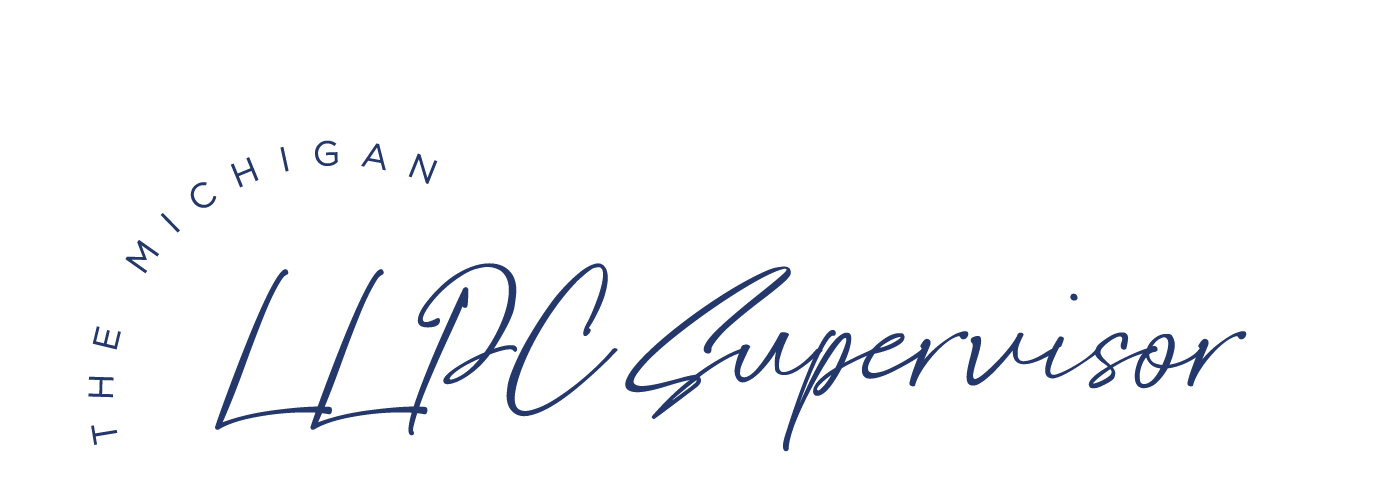How to Write a Professional Disclosure Statement for Michigan LPCs: A Step-by-Step Guide 📒
Writing a professional disclosure statement can feel daunting, especially for new counseling graduates in Michigan. However, this document is more than a legal requirement—it's a cornerstone of ethical practice and a way to establish trust with your clients. Whether you're applying for your Limited Licensed Counselor (LLC/LLPC) license or updating your document as a Licensed Professional Counselor (LPC), this step-by-step guide will help you craft a disclosure statement that complies with Michigan's LARA regulations and supports your professional journey.
Why is a Disclosure Statement Important?
For new counseling graduates applying for their limited licensed counselor (LLC/LLPC) license in Michigan, some information required in the disclosure statement may not yet be available. Keep in mind that this document will evolve as your practice changes—whether you're starting a new job, updating your rates, or earning your full LPC. Your initial draft of the disclosure statement will likely serve to satisfy LARA’s application requirements. Once your application is approved, you’ll update this document with details like your license number and employer information.
Step 1: Include Basic Contact Information
Start with your identifying details:
Your name
Your business address (where you practice counseling services)
Your telephone number
If you’re unsure of your practice location or haven't started a job yet, use placeholders such as:
"Virtual appointments only."
"Practice location TBD."
Your school’s address as a temporary option.
Pro Tip: Avoid using your home address for privacy reasons. Consider using tools like Google Voice to create a professional phone number that helps separate your work and personal life.
Step 2: Provide a Description of Your Practice
Describe the services you offer, even if you're just starting out:
Types of services (e.g., individual therapy, couples counseling, group therapy).
Areas of specialization (e.g., anxiety, depression, trauma).
Populations served (e.g., adults, adolescents, children).
If you’re unsure of these details because you haven’t started practicing, use general terms like:
"I provide general counseling services and specialize in supporting individuals managing anxiety, life transitions, and stress. This section will be updated to reflect my specific role once I begin working."
Step 3: State Your Qualifications
Outline your professional background:
Type of license (e.g., LPC, LLPC).
License number (if applicable).
Education (e.g., degree, institution, relevant certifications or training).
For LLPCs submitting their initial disclosure statement, you won’t have a license number yet. Use phrases like:
"To be determined by LARA during the application process."
"Will be updated upon issuance of my limited licensed counselor license."
Step 4: Explain Your Theoretical Orientation
Provide a brief but clear statement on your approach to counseling:
Example 1: "I use a person-centered approach, integrating cognitive-behavioral therapy (CBT) techniques to address client concerns."
Example 2: "My practice focuses on trauma-informed care and mindfulness-based stress reduction."
This section should explain how you do counseling:
What tools or techniques do you use?
How do you determine the course of treatment?
What can clients expect when working with you?
Step 5: Outline the Client’s Rights and Responsibilities
Clearly list client rights, such as:
The right to confidentiality (and exceptions, like harm to self/others).
The right to informed consent about the counseling process.
The right to refuse or discontinue treatment.
Also, outline client responsibilities, including:
Attending scheduled appointments.
Participating actively in therapy.
Providing accurate emergency contact information.
Step 6: Include Fee Information
Detail your fees and financial policies:
Session rates (e.g., $75 per 50-minute session).
Accepted payment methods (e.g., cash, check, credit card, insurance).
Policies for missed appointments or cancellations.
If you plan to offer a sliding fee scale or varied rates, ensure transparency. While Michigan doesn’t prohibit fee variability, any differences must be nondiscriminatory and clearly justified to avoid ethical concerns.
Step 7: State Your Supervisor’s Information (for LLPCs)
If you’re an LLPC, include:
Your supervisor’s name.
Their license type and number.
Their contact information.
Consider adding a note like:
"Clients can reach out to my supervisor if they have questions or concerns that they are uncomfortable discussing directly with me."
You might also link to your supervisor’s website or include their supervisory disclosure statement.
Step 8: Add Emergency Contact Instructions
Provide clear crisis guidance:
"In case of an emergency, call 911 or visit the nearest emergency room."
Include crisis hotline numbers, like 988.
Set boundaries for communication:
Specify business hours for responses (e.g., "I respond to messages within 24 business hours.").
Clarify preferred communication methods (e.g., "Email and phone calls are acceptable; text messaging is not monitored.").
Step 9: Include the Date and Client Signature Section
End the document with:
A space for the client’s signature.
A date line for acknowledgment.
This ensures the client agrees to and understands the terms outlined in the disclosure statement.
Final Tips
Regularly update your disclosure statement as your practice evolves.
Keep a copy of each version for your records.
Use clear, client-friendly language while maintaining professionalism.
Need Help Getting Started?
If you’re still feeling unsure about crafting your disclosure statement, visit The Michigan LPC Supervisor for resources, templates, and professional guidance tailored specifically for Michigan counselors.
If you found this guide helpful, don’t miss our next blog post: Michigan LPC Consent for Treatment: Downloadable Template & Guide for Counselors. It offers step-by-step instructions and a downloadable template to create your Consent for Treatment document.
🎙 Listen to My Podcast:
Discover insights and advice tailored for counselors on Friends with (Therapy) Benefits. Available now on Spotify, Apple Podcasts, and Amazon Music.
📬 Subscribe to Stay Updated:
Never miss a new blog post or resource! Subscribe to my newsletter and receive exclusive content straight to your inbox.
🔗 Connect on LinkedIn:
Join the conversation and follow my business, The Michigan LPC Supervisor, for professional tips and updates. Follow us on LinkedIn.


